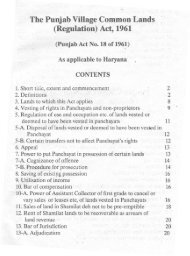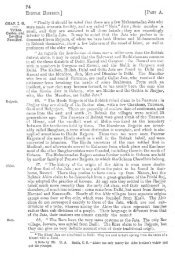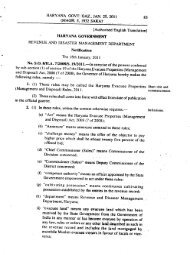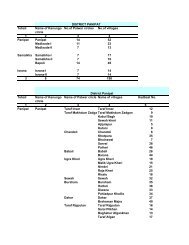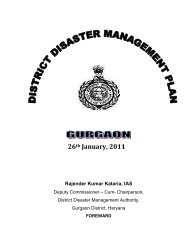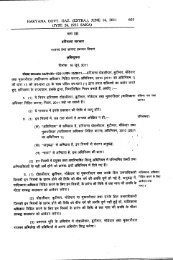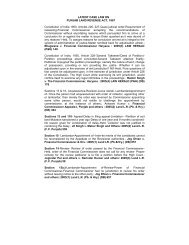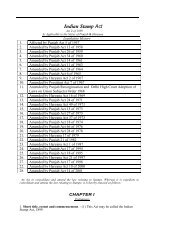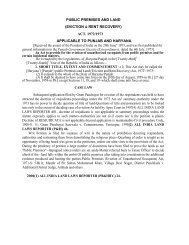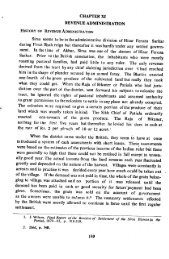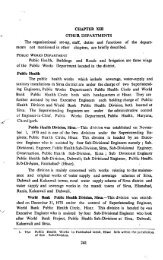chapter - ix - revenue and disaster management department, haryana
chapter - ix - revenue and disaster management department, haryana
chapter - ix - revenue and disaster management department, haryana
Create successful ePaper yourself
Turn your PDF publications into a flip-book with our unique Google optimized e-Paper software.
70in the district. Before the reorganization of the district this number washigher. Thenumber of four wheeledtempos, whichcarrygoods from oneplaceto another, isabout 75inthedistrict. Thistype of vehicleiscalledMatador.It has been gaining much popularity ingoods transport. These metadors aremostly financed by the banks.Transport workers, Drivers, Conductors, Cleaners, etc., are employedboth in the public <strong>and</strong> private sectors.Barbers.-Their number in March 1977 was2,750 inthe district. Thisalso included hair dressers <strong>and</strong> related workers. In urban areas the oldpractice ofa family barber isalmost extinct. People pay barbers for serviceat home or goto a hair cutting saloon. Hair cutting charges varyfrom Re. 1toRs. 1.25 <strong>and</strong> shaving chargesfrom 30to40 paise. The barbers inBhiwanitown havetheir ownunion which enjoins upon itsmembers tofollow certainrules <strong>and</strong> regulations in economic <strong>and</strong> social ;matters.In villages, however, the old practice of a fa~ily barber is in vogu:.H; can still b~ s~n at social ceremonies <strong>and</strong> otht:rwise. He attends hisyajmans (patrons) at their residence <strong>and</strong> gets remuneration in kind at harvestingtime.The wifeofthe barber callednain does some sort ofhair cleaning<strong>and</strong>hair dressing for women invillages<strong>and</strong> her presence on certain social<strong>and</strong> religious ceremoniesis necessary. In old timesthe nai (barber) used tobe a messenger from the bride's family to the bridegroom's family <strong>and</strong> viceversa. He played a veryimportant role inthe arrangement ofmarriages, <strong>and</strong>the barber's wife (nain) usedto accompany the bride after the marriage to herin-laws. This pratice has since fallen into diSUse.Washermen.-In March 1977, their number was 274 (218 men <strong>and</strong> 56women). It included dhobis, launderers, drycleaners <strong>and</strong> pressers. Washermenmostly servetheurban areas; thevillagersdotheir own washing. Washermencollectclothes fromthe residenceoftheir customers <strong>and</strong> generally charge30'paiseper article ofclothing. However, the chargesfor a bed-sheet, khes;carpet are almost double orthree timesthisrate. The launderers run regularshops <strong>and</strong> do not undertake home delivery. They charge higher rates thanthe dhobis. Their quick <strong>and</strong> efficientservice ensures good customers. Thelaundry owners either USewashing machines oremploy dhobis for washing <strong>and</strong>



